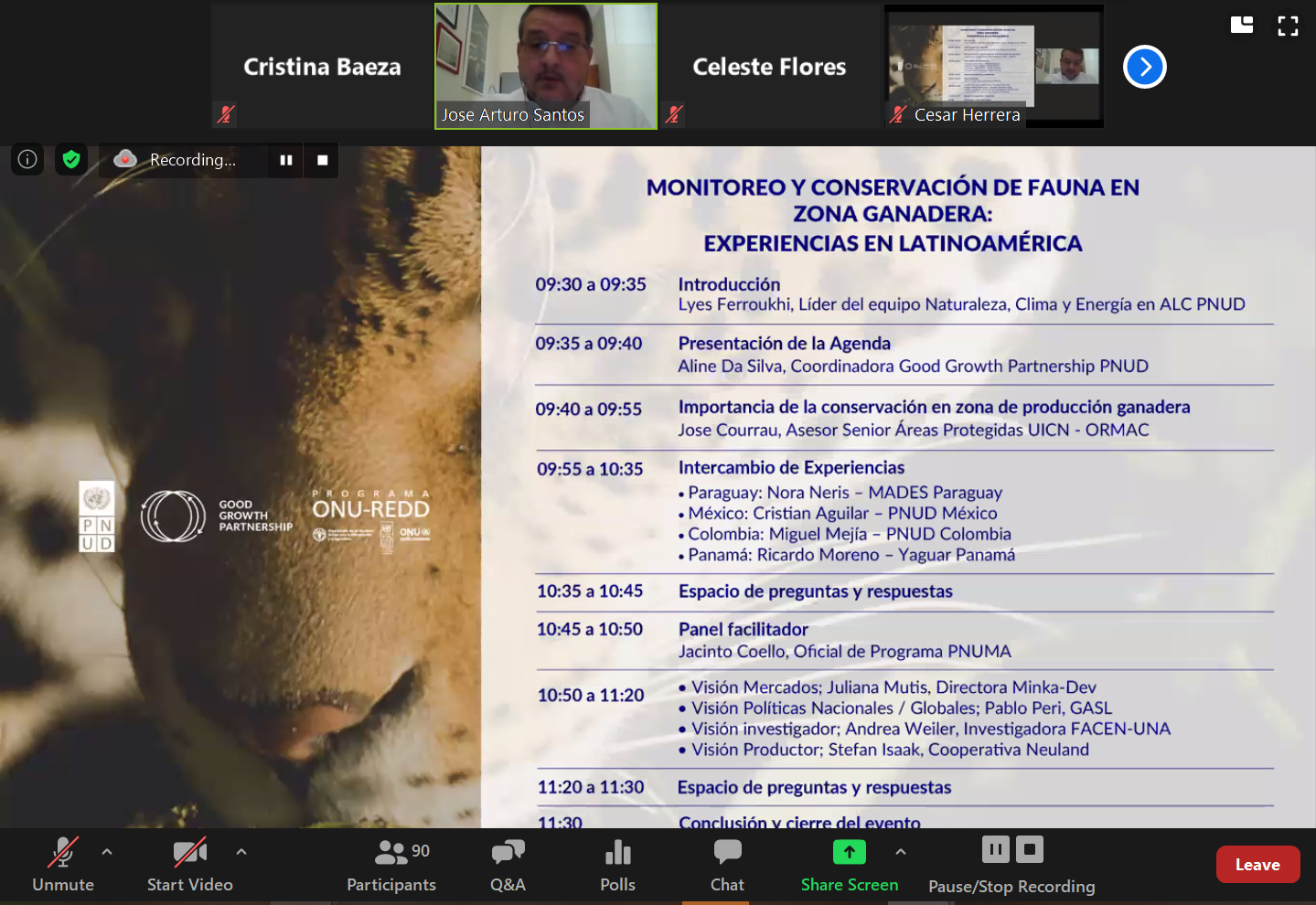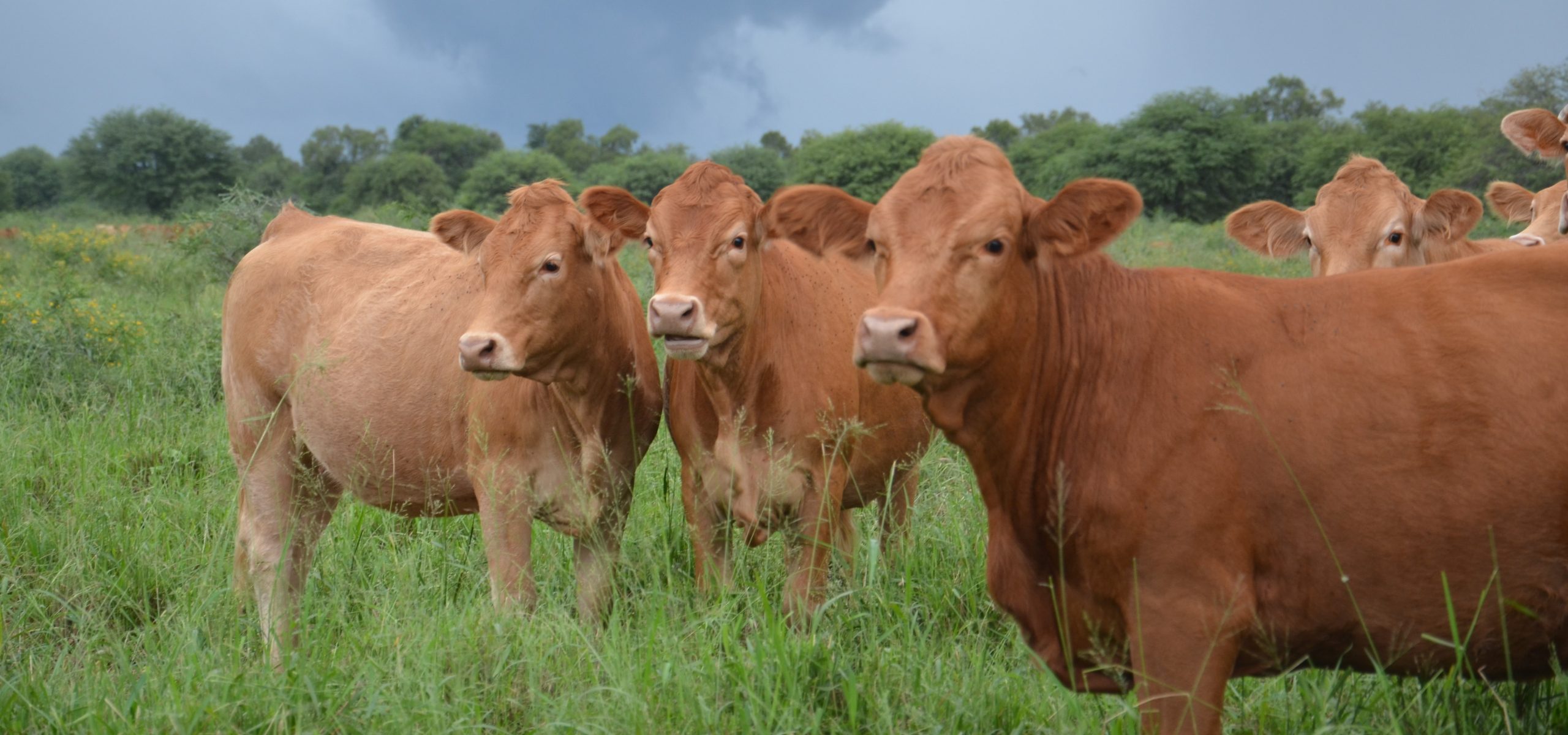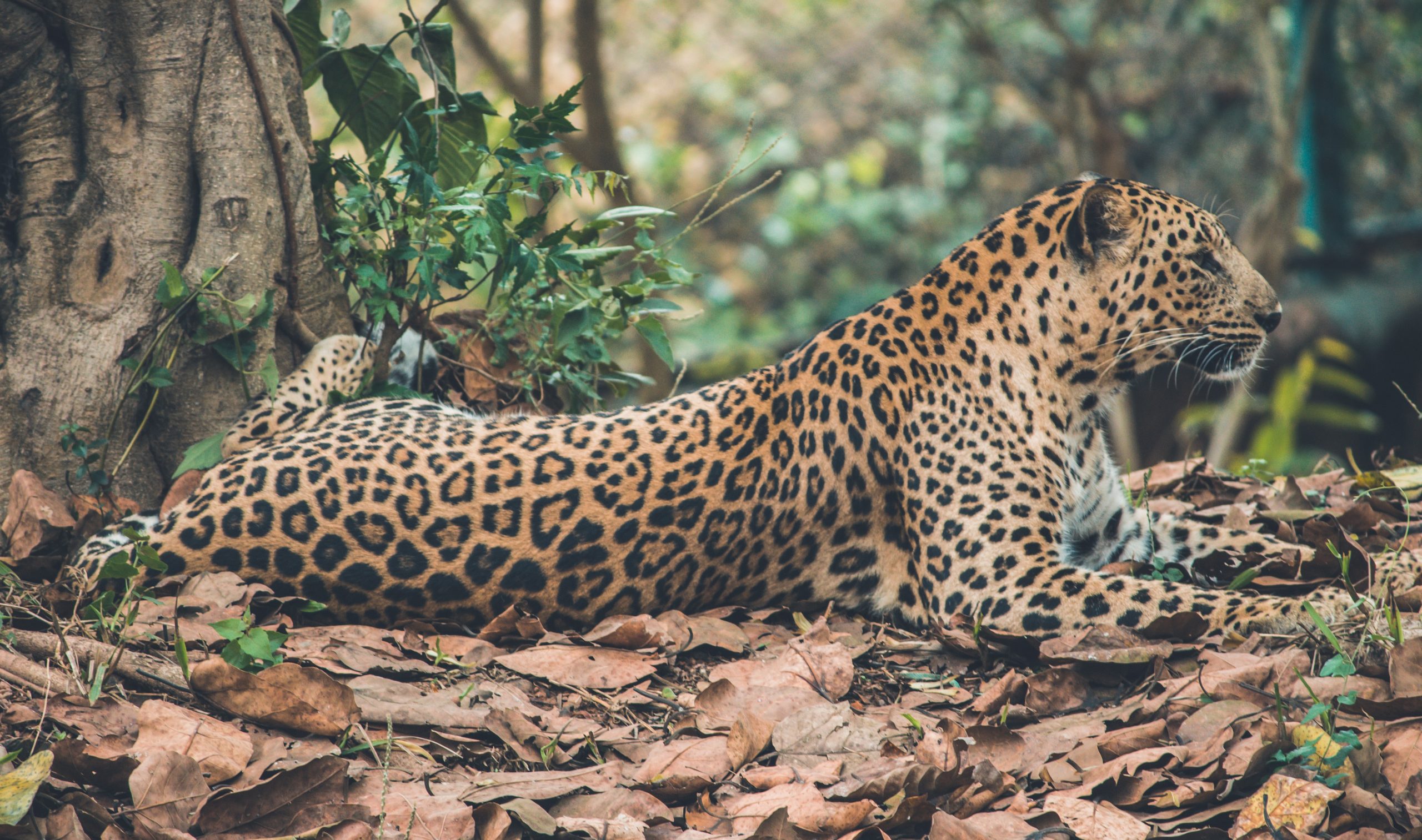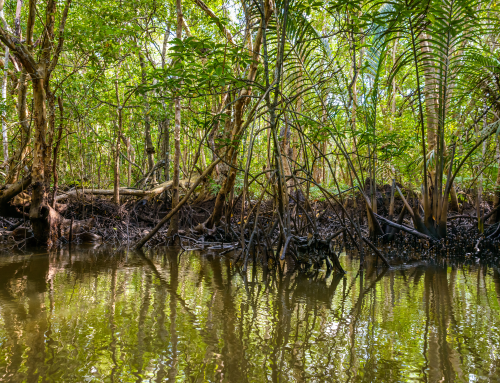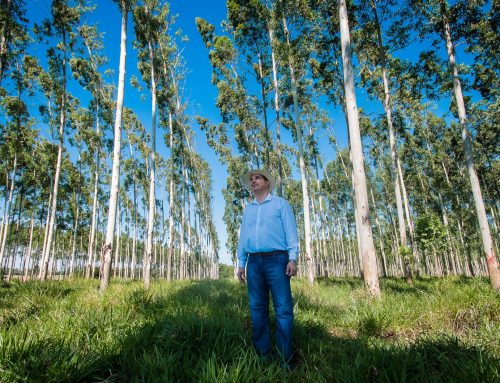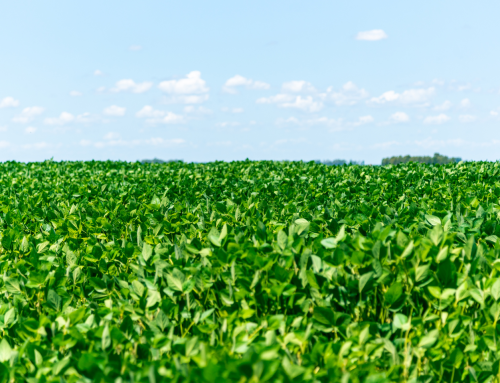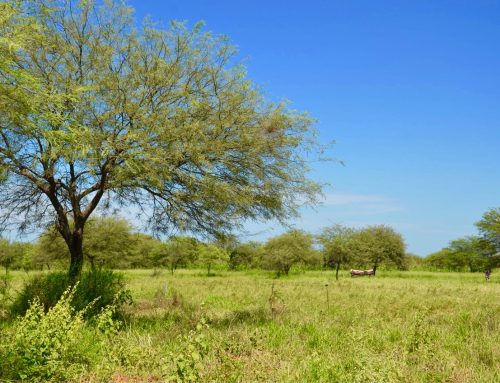This blog was written with the support of Fabio Viquez of Colmena Lab.
Sustainable livestock systems have the potential to support countries in improving their territorial governance, which translates into the reduction of environmental conflicts, the promotion of the conservation of ecosystems and the generation of economic benefits for families.
As the crisis has subsided in much of the world, Latin America has emerged as the new centre of the COVID-19 pandemic. With the rapid spread of cases, Latin America is struggling to face the health, economic and social challenges the crisis has brought to the different countries, adding to the already well-known consequences of climate change. With this context in mind, the region might be in front of a unique opportunity to change its productive approach for one more harmonious with the protection of the environment, the fight against climate change and the Sustainable Development Goals.
Sustainable livestock farming is one of the tools merging those needs while also representing the perfect pathway to promote sustainable development in the region.
In a joint effort, the Good Growth Partnership, the United Nations Development Programme (UNDP), and the UN REDD Programme carried out in June a virtual exchange of experiences between different countries and organizations on the management of endangered species in cattle-raising areas of Latin America.
“During the last ten years, the UNDP Regional Hub office for Latin America and the Caribbean has worked to develop and implement strategies, projects and programmes aimed at protecting ecosystems. In Latin America, the livestock sector is key to achieve the sustainability values that we want to uphold, and so we have been working hard and strategically with all stakeholders involved in it”, said Lyes Ferrouhki in his opening remarks, Leader of the Nature, Climate and Energy team at the UNDP LAC Regional Hub.
According to figures presented by the Food and Agriculture Organization of the United Nations (FAO), livestock is estimated to be the main source of income for around 200 million families of small producers in Asia, Africa and Latin America, and the only source of livelihoods for at least 20 million. If the medium producers are added to this data, the figures could pretty much double. According to the FAO, Latin America has become the largest exporter of beef and poultry in the world, which represents approximately 45% of the GDP of the agricultural sector in the region.
But there is a downside to such growth. This surge has caused that close to 70% of grazing areas in Latin America and the Caribbean are in a process of degradation, in addition to significantly increasing levels of gas emissions from the greenhouse effect. According to the figures presented by the Intergovernmental Group of Experts on Climate Change (IPCC), livestock accounts for about 40% of the emissions generated by the agricultural sector. These two factors have caused ecosystems close to livestock production to be significantly altered.
As stated during the event by José Courrau, Senior Advisor to the International Union for the Conservation of Nature (IUCN) Protected Areas – ORMAC, “45% of threatened species are affected by agricultural activities and 12.5% of them are directly affected by climate change. The involvement of the private sector and local communities is of crucial importance to raise awareness, strengthen local governance and change behavioral habits that promote sustainable production systems that contribute to conservation”.
In the webinar, experts from Costa Rica, Mexico, Colombia, Panama and Paraguay presented initiatives that have managed to build sustainable production and conservation initiatives based on local governance in partnership with non-governmental organizations, state institutions and local communities.
José Courrau, Senior Advisor to IUCN Protected Areas – ORMAC, explained how the “Jaguar Corridor Initiative”: through the establishment of biological corridors, it has managed to develop capacities in national conservation teams, implement action plans in biological corridors, involve key actors in the livestock sector to avoid conflict, develop national and local policy initiatives to promote conservation and sustainable livestock practices and monitor and evaluate the species in the corridors.
Cristian Aguilar, from UNDP Mexico, presented the program “Species at Risk”. Based on training and the creation of an insurance fund for livestock preyed upon by Mexican wolves due to the degradation and fragmentation of the habitat of this species, it has been possible to build tools to resolve the conflict between this species and the livestock sector in the near the Janos Biosphere Reserve. One of the main components of this project was training for the comprehensive management of ranches, which includes sustainable marketing alternatives for organic meat products that generate greater profits for producers.
Miguel Mejía, from UNDP Colombia, presented the project “Sustainable Amazon for Peace”, operating in Caquetá, one of the areas with the largest livestock presence in the country and which presents a conflict with big cats such as the jaguar, the puma and the tigrillos. This project is based on the environmental governance of the territory and has a jaguar awareness and training school, a jaguar monitoring and conservation network at the community and school level, and a participatory communication strategy involving social organizations and communities. This project has allowed many of the small livestock producers to opt for sustainable production systems and adopt the jaguar as a symbol of conservation and guarantee for the marketing of their products.
Ricardo Moreno, representative of Yaguará Panamá, explained how with the participation of state institutions, non-governmental organizations, the livestock sector and the communities they have managed to develop a preventive management program for jaguar-livestock conflicts that includes the development of good livestock practices for the farm management. Thanks to their efforts, they have managed to constitute a special fund for the conservation of big cats.
Noris Neris, Director of Wildlife of the General Directorate for the Protection and Conservation of Biodiversity of the Ministry of the Environment and Sustainable Development of Paraguay, presented the Panthera Onca (Yaguareté) conservation initiative, which has managed to build a protocol for the study of techniques of coexistence of the jaguar in livestock areas in various areas of interest.
In a region so badly hit by the health, social and economic crisis unleashed by the COVID-19 global pandemic, the question is whether sustainable livestock farming has a specific market that can allow economic recovery to be harmonized with the sustainable management of nature and what actions should the states of Latin American countries start to promote to reach them.
A broad range of experts were invited to participate as panelists in the webinar to answer this important question, including Juliana Mutis, Director of Minka-Dev, Pablo Geri, from the Global Agenda for Sustainable livestock (GASL), Andrewa Weiler, Researcher at the Faculty of Exact and Natural Sciences at the University of Asunción in Paraguay, and Stefan Isaak, from Cooperativa Neuland. Facilitated by Jacinto Coello, Programme Officer at the United Nations Environment Programme, the panel contributed their perspectives on the market and momentum that countries should generate through the creation of specific public policies for sustainable livestock farming.
Experts agree that there is a global market niche interested in the consumption of sustainable meat, and the demand from consumers to know and understand the meat production process is rapidly increasing. That is part of the reason why traceability is adopting such an important role in sustainable production, while at the same time becoming one of the biggest challenges for producers.
Likewise, experts agree that in order to capture the full value of a product from a sustainable livestock initiative, a marketing model based on transparency must exist, anchored to a trade route linked to conservation. To achieve this, a few things become essential: the creation of territorial brands (country brands), raising awareness, and the development of a solid narrative that tells the story of the product to ensure a perception of added-value to the products. And again – to achieve these goals, it is necessary for the governments in the region to promote policies that encourage the creation of integrated agricultural-livestock-forest systems, as viable alternatives to recover degraded areas, protect biodiversity, develop sustainable livestock and promote sustainable intensification of production.
During his closing remarks, José Carlos Fernández from the FAO said: “I want to highlight the need to rely on scientific data, collaborative action and the technical support of producers if we are to win this battle”.
Sustainable livestock can play a very important role for the region in both adapting to climate change and mitigating its effects, as well as contributing to the generation of resources to alleviate poverty and improve the livelihoods of millions of people.

